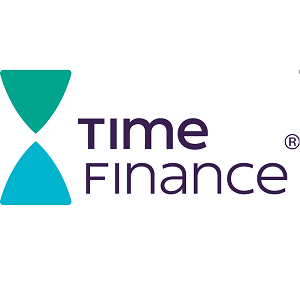Nasstar Plc (LON:NASA) CEO Nigel Redwood talks to DirectorsTalk about its results for the year ended 31 December 2017. Nigel talks us through the financial highlights, the progress made with the Nasstar 10-19 programme, how its fully managed cloud solution is progressing, Nigel’s thoughts on the market and the strategy for the rest of the year.
Financial Highlights
· Revenue up 31% to £24.5m (2016: £18.7m) (with underlying growth excluding acquisitions of 9%+)
· 88% of 2017 revenues generated from contracted recurring services (2016: 88%)
· EBITDA* up 47% to £5.2m* (2016: £3.6m*)
· Adjusted EBITDA** up 50% to £5.6m** (2016: £3.5m**)
· Adjusted EBITDA** margin increased to 23% (2016: 20%)
· Adjusted profit before tax*** up 87% to £3.5m*** (2016: £1.9m***)
· Reported loss before tax £1.2m (2016: £1.8m)
· Proposed final dividend for the year of 0.06p per share, a 15% increase on prior year
· Year-end Net Cash ahead of expectations at £1.0m (31 December 2016: Net Debt £2.8m)
· Loss Per Share 0.2p (2016: 0.3p)
· Adjusted earnings per share up 24% to 0.51p *** (2016: 0.41p***)
* Comprising earnings adjusted for interest, taxation, depreciation, profit on sale of fixed assets and amortisation. Refer to Alternative Performance Measures for reconciliation to GAAP measure.
**Comprising earnings adjusted for interest, taxation, depreciation, profit on sale of fixed assets, amortisation, share based payments and exceptional items (being costs in relation to acquisitions during the year, reorganisation costs, share repurchase costs and provisions). Refer to Alternative Performance Measures for reconciliation to GAAP measure.
***Adjusted for amortisation of acquired intangibles, share based payments and exceptional items Refer to Alternative Performance Measures for reconciliation to GAAP measure.
+ Excluding the impact of acquisitions in both years
Operational Highlights
· 2017 was focused on maximising the opportunity that was presented by the previous three years’ acquisition activity. This focus saw the launch of the “Nasstar 10-19” programme designed to deliver an increased strategic focus to create one fully integrated business.
· The resultant benefits of the “Nasstar 10-19” plan were realised with the Adjusted EBITDA** margin increasing to 23% against the target of 25% by the end of 2019.
· Top to bottom organisational structure redesigned to deliver an integrated company, with one team for each function across the Group, managed by one leadership team.
· Organic business development progressed well in 2017 with clear signs that the Nasstar offering is continuing to be more attractive to clients of an increased size.
· Our industry leading capability in “public/private” cloud hybrid solutions was in evidence in November’s contract win which secured a three-year contract to deliver a fully managed solution to a global workforce of 1,000 users.
· Significant investment was made in the account management team designed to develop a consistent first class approach to customer service and maximise the revenue opportunity presented by the enlarged customer base.
· All UK based out of hours support migrated to the Nasstar New Zealand office, generating operational efficiencies across the Group.
· As part of the “Nasstar 10-19” programme, plans were initiated to close three of the Group’s seven UK data centres. One of these three was successfully closed in 2017 with the final two now due for closure during 2018.
· The Group’s professional services team has been active on the development of its own application functionality, enhancing Nasstar’s own IP whilst helping contribute to customer retention.
· Broadening of the professional services team remit to create a public cloud centre of excellence, enabling Nasstar to deliver value added consultancy to clients that enables them to maximise the benefits of the public cloud feature set.
· For the second year running Nasstar is listed in the “1,000 Companies to Inspire Britain”.
Nigel Redwood, Chief Executive Officer of Nasstar Plc, commented: “2017 was a pivotal year for Nasstar, a year in which we focused on maximising the opportunities which our previous acquisition activity had created.
“The launch of the “Nasstar 10-19” strategy focused each and every employee on key priorities and laid solid foundations to help us deliver against our target to raise margins from 20% to 25% of revenue by the end of 2019.
“I was delighted to announce the November contract win that saw us secure a 1,000 user public / private hybrid cloud customer. This deal, amongst others in 2017, serves to endorse the technical strategy that we adopted when embracing the integration of the public cloud into our private cloud services. I am confident that this will continue to make Nasstar’s offerings very relevant and attractive to the market in 2018.”


















